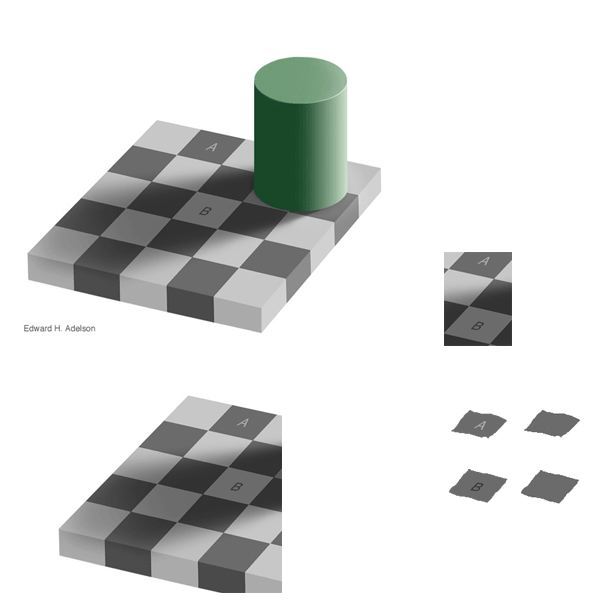Making Sense of the "Picture in the Head"
What one "sees" is demonstrably not what is "out there", in lots of different ways (see Biology 202 and Getting It Less Wrong, The Brain's Way: Science, Pragmatism, and Multiplism). Among the most easily demonstrated difference is that the "brightness" of any given location in the "picture in the head" (what you "see") can be quite different from the "brightness" as a photometer would measure it (in terms of the numbers of photons reaching the eye from that location). Instead, the brightness of a location of the picture in the head reflects the number of photons reaching the eye from that location as well as a number of different processes occurring in the nervous system that alter the perceived brightness in ways that reflect other locations in what's being looked at. These include the operation of a "lateral inhbition network" in the retina, which discards much of the information about numbers of photons reaching the eye and compresses it into information about the existence and character of of sharp contrast borders (locations at which the numbers of photons are quite different).
A dramatic demonstration of the "non-reality" of brightness in the picture in the head has been provded by Edward H. Adelson, Professor Vision Science at MIT, in his checker-shadow illusion. While the squares labelled A and B in the upper left figure below appear to be of quite different brightnesses they are actually sending the same number of photons to the eye.
To verify this, a graphics program was used to sucessively isolate the two regions from other parts of the image that are used by additional brain processes to create the "brightnesses" of the picture in the head. When the patches have been fully isolated and are displayed on a common white background (lower right) they are perceived simply in terms of the numbers of photons reaching the eye from each and appear as equally bright (or dark).
Because of the lateral inhibition network, locations surrounded by darker locations will tend to be seen as brighter than comparable locations surrounded by lighter locations. Shadowing also contributes to the "illusion" in the case.

| Course Home Page
| Course Forum | Brain and
Behavior | Serendip Home |
Send us your comments at Serendip

© by Serendip 1994-
- Last Modified:
Wednesday, 02-May-2018 10:53:05 CDT

